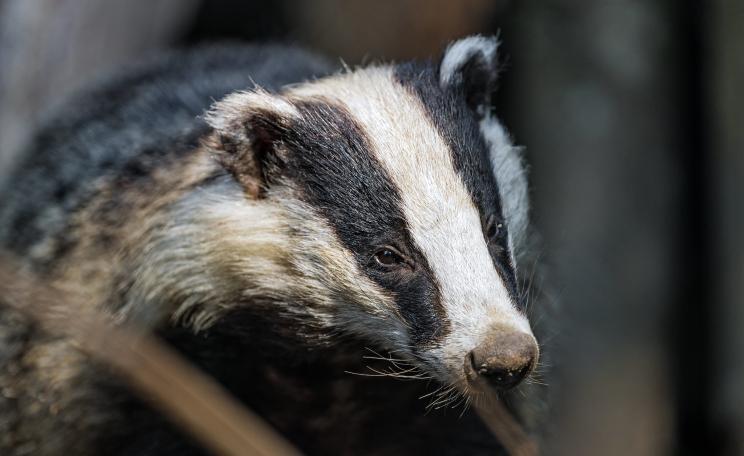We may as well vaccinate cattle now because in five years-time this DIVA test is likely to offer little or nothing.
Defra’s enthusiasm for bovine TB (bTB) vaccinations is not perhaps surprising. The department's Animal and Plant Health Agency (formerly Animal Health and Veterinary Laboratories Agency) has invested over £20 million in DIVA research since the early nineties and needs something to show for all the publicly funded work that was supervised by their former chief scientist.
This substantial investment reflects the recognition that bovine TB is primarily a bovine respiratory disease. Badger culls over the past seven years are showing no tangible benefit, despite rather unconvincing attempts to model data to try to show that it might.
Cattle vaccination has now been left very late in the day and very many cows are infected, with disease moving steadily east and north. Reducing cow-cow transmission through cattle vaccination is therefore likely to have a huge and immediate impact in controlling both inter and intra-herd transmission. The emergency needs attention now.
Switch
Any switch to cattle vaccination would be transformational and a welcome approach to bTB disease management. It's baffling that it's taken so long.
The delay appears partly due to the post-2008 (economic crash) aim to placate industry (NFU) wishes to accelerate beef and dairy export. This attempt to manipulate disease control has not only misfired but helped devastate farming lives and an industry for a generation.
Had vaccination been put in place earlier, billions of pounds of public money paid out on compensation could also have been saved, and farm livelihoods and even human lives rescued.
So, why the need for a DIVA test? The decision is largely driven by trade, finance and the likely acceptance by countries that imported English livestock and produce are truly TB-free. The newly planned Defra cattle vaccination experiment will use the BCG TB vaccine which is a live attenuated vaccine. Success of cattle vaccination will correlate with the induction of an anti-Mycobacterial immune response.
We may as well vaccinate cattle now because in five years-time this DIVA test is likely to offer little or nothing.
The current ‘gold standard’ for diagnosis of bTB is still the SICCT skin test, which also measures the immune response of the animal against specific Mycobacterial proteins. Consequently, it is currently impossible to distinguish any vaccine-driven immune response from one elicited by a bovine TB infection on the farm.
Testing
Over the years, APHA have been searching for a specific immune response that is elicited by either the vaccine or a natural infection, in an attempt to convincingly tell them apart. This is with a view to using the vaccine antigen (that elicits that DIVA response) as the basis of what in effect is a new version of the SICCT test.
The imminent availability of such a test has been documented since at least 2012 and the start of mass badger killings. But despite the promises, but is still not available although further data was reported in a peer-reviewed publication in 2019.
The 2019 paper described the use of a specific peptide antigen in a skin-test (called DST) in contrast to the cocktail of poorly standardised Mycobacterial antigens that is used in the current SICCT test. The advantage of using a defined small peptide antigen would mean it is much easier to produce and implement quality control.
However, the read-out would be exactly the same as the current skin tests (with a sensitivity of 50-80 percent ) so the downside would be that the test is still largely subjective, would involve vets administering the antigen, returning to the animal several days later and, almost certainly, still having the problems associated with the poorly labelled inconclusive reactors (IRs). The 2019 paper suggests the DST will considerably improve a century-old standard, but that isn’t saying very much at all. It’s not enough.
Given these issues, exactly how much confidence would any trading partner country actually have in accepting any bovine that elicited a subjective immune response? Also, despite the vast amount of effort already applied into such a product, the system would still need to go through standard World Organisation for Animal Health OIE) approval, taking several years.
Double-standards
Interestingly, Defra have taken a very tough line with new bTB tests which have shown promising utility in its management. Although they eventually allowed these “unvalidated” tests to be used under exceptional use protocols, they have been consistently vocal about their lack of interest in these tests until they receive OIE approval.
This smacks of double standards, raising expectations from farmers, vets and environmental groups to their own test when it is equally if not further from what disease control actually needs - real validation.
This also raises the question as to alternative DIVA approaches. From a trading, public health and epidemiologic perspective the real key is to identify animals that might harbour live bTB which can infect other animals or contaminate the food-chain. In the past this has been impossible to guarantee because the only option to detect the presence of live bTB was culture which takes typically 11- 12 weeks to carry out and is both notoriously insensitive and prone to contamination.
However, there is a new technology on the block which is attracting even more interest due to its field-based performance. Grossly overlooked by the Godfray Report in 2018 LINK 3 this technology, Actiphage, can reproducibly determine the presence of live bacteria from a blood sample and provide a highly specific and sensitive result within six hours.
Importantly, the test can also simply differentiate between the BCG vaccine strain and a natural infection therefore defining itself as a true DIVA test. This is quicker, not subjective and a direct measure of the presence of live bacteria. It could be used as a true quality control system to detect infected and, potentially, infectious animals.
Sadly, and rather predictably, Defra still hide behind their usual OIE validation position to protect their own assay rather than supporting and testing the Actiphage system themselves to compare performance. Vanity more important that getting the job done?
Compromise
Furthermore, and somewhat counter-intuitively, OIE validation sounds like a tough exam but it isn’t really. Yes, the tests and trial have to be done properly and the data presented, all taking several years and a fair bit of money. But there is no real high bar. Any test can be validated even with low sensitivity and/or specificity.
The point being that the OIE review process tells you what the test can and cannot do but not that it will work well enough to help you sell cows to France. Equally, surveillance after OIE registration is not always that strict. Gamma interferon for example although proving useful in identifying a higher percentage of bTB reactors, is not performing in the field anywhere near to its OIE claims.
Put another way, we may as well vaccinate cattle now because in five years-time this DIVA test is likely to offer little or nothing. Yet the spread of bTB will be more entrenched and will have made matters worse, as in the Republic of Ireland today where bTB has reached all corners.
These details are why Ministers and their advisors need to take a very hard and close look at what they have been told and ask why APHA now invents new ways to blame badgers via ridiculous ‘risk pathways’ that equate to veterinary guesswork.
Defra’s claims to be looking for an end to bovine TB are just another sham in this very sad story. All elements of it polluted with compromise and self-interest that should have been tackled head-on ten years ago. Defra’s cabal is now riddled with industry and academic vested interest, needing leadership overhaul to resolve.
This Author
Tom Langton is an international consulting ecologist to government, business and industry. He provides advocacy support to charities and pressure groups seeking justice where environmental damage is being caused to species and habitats. He has worked for over 40 years in nature conservation including common and protected species management, habitat management & restoration, wildlife disease investigation and invasive non-native species control.







